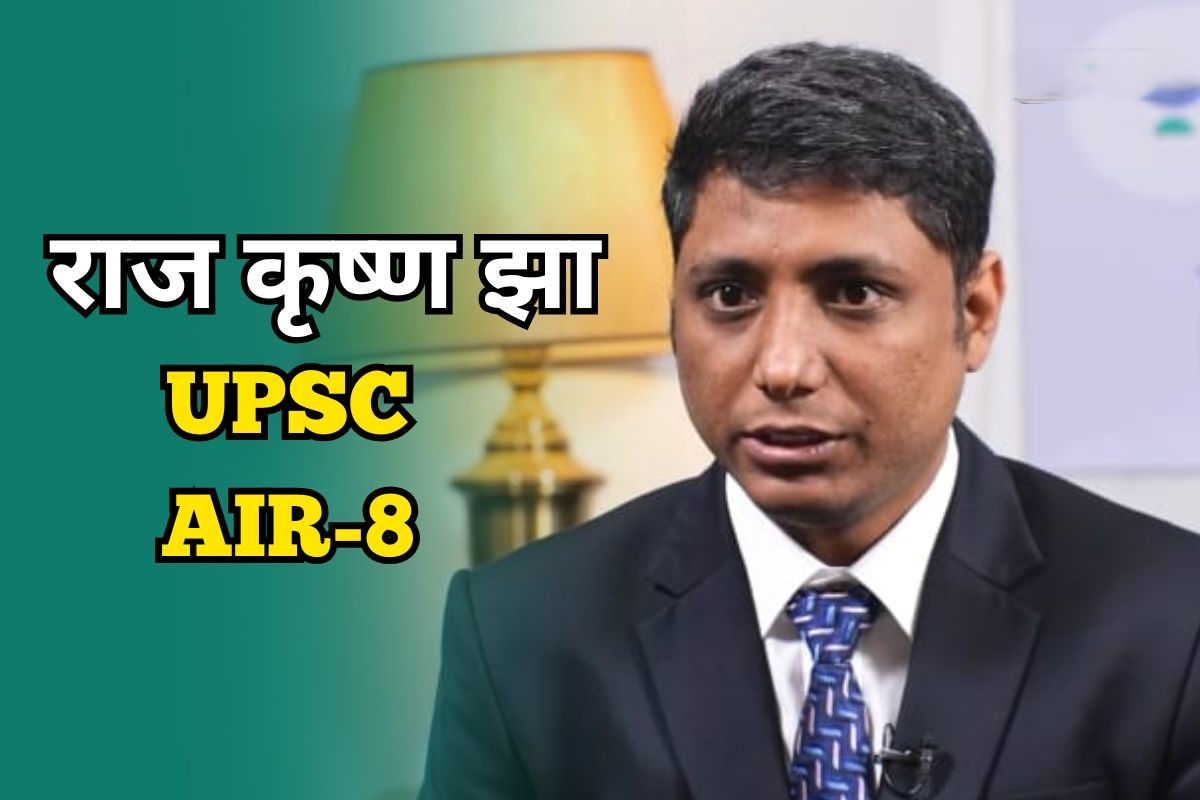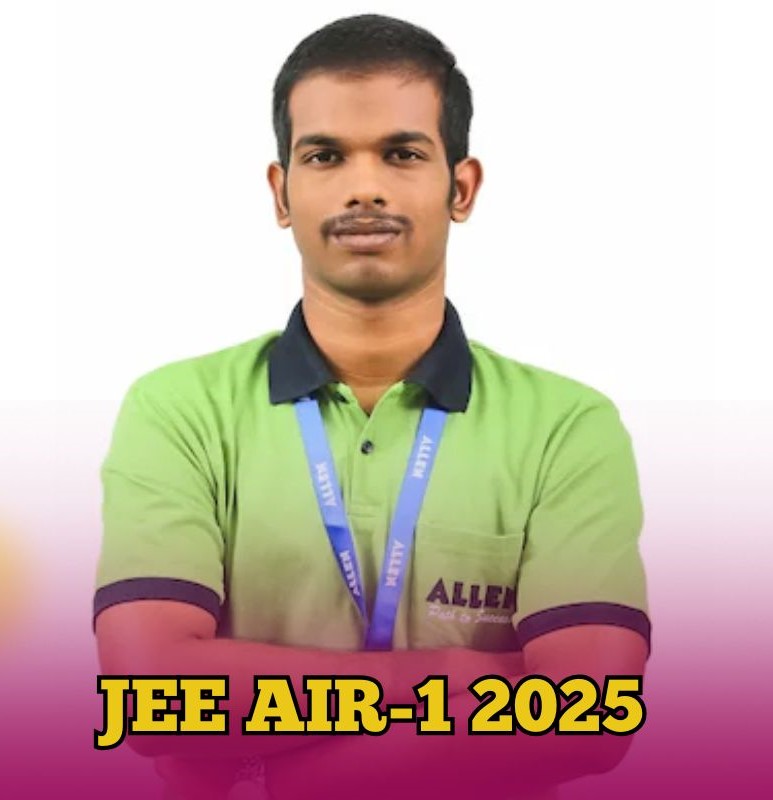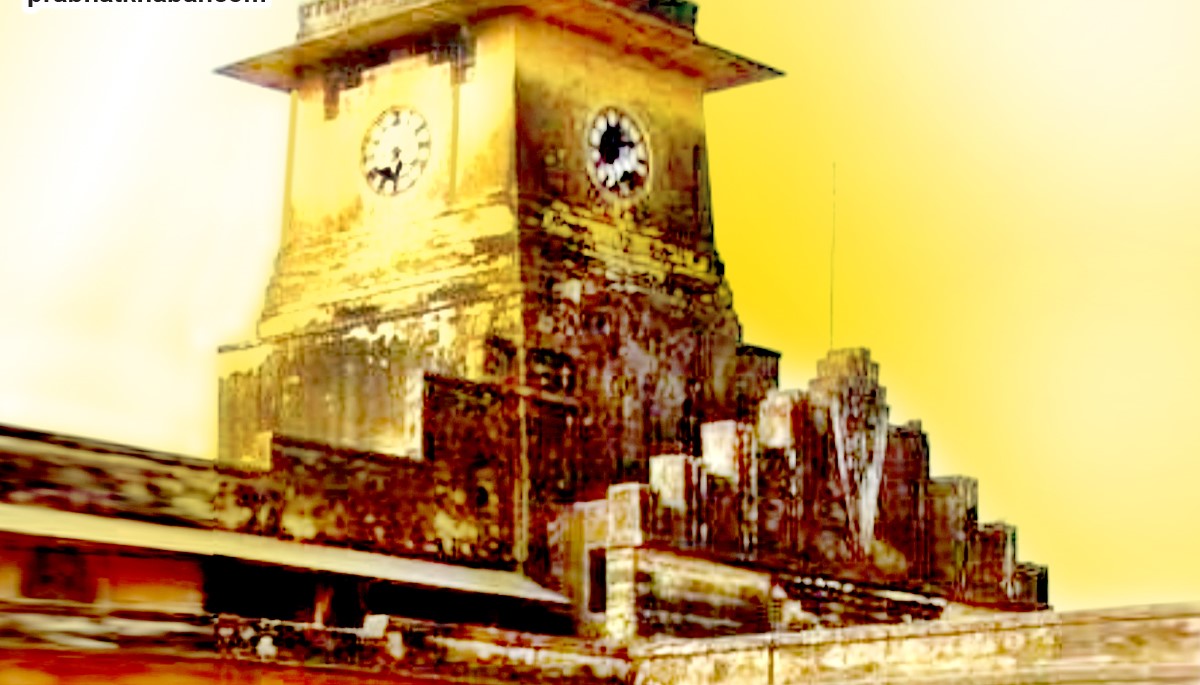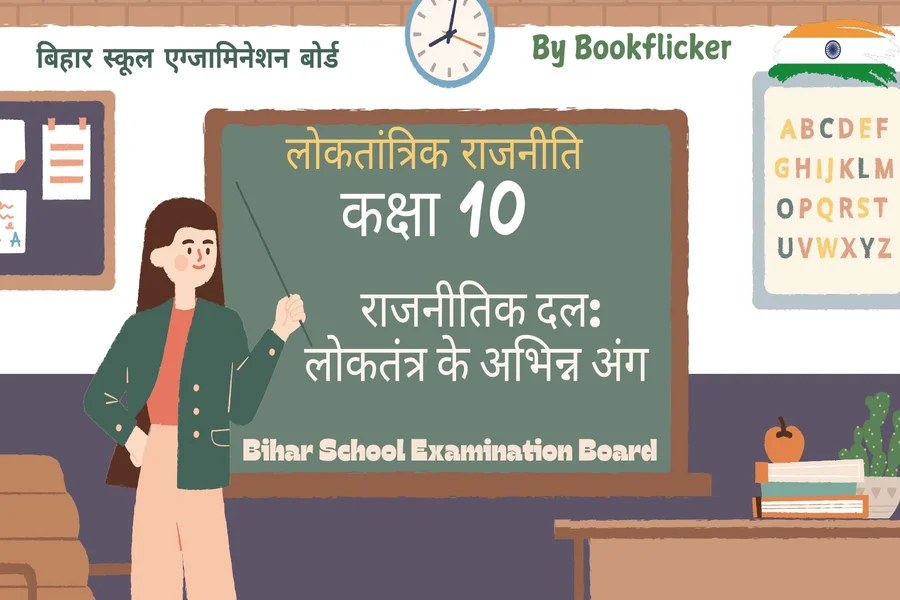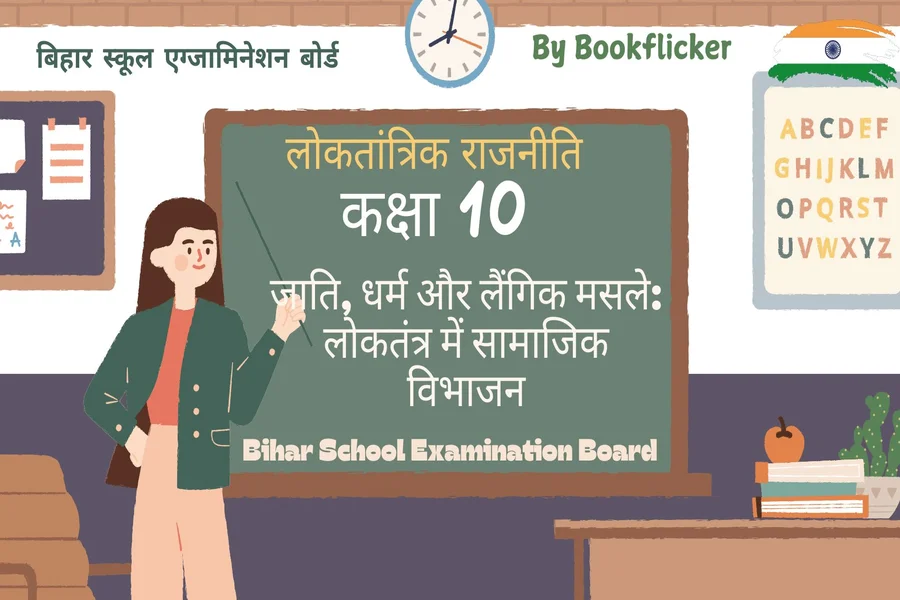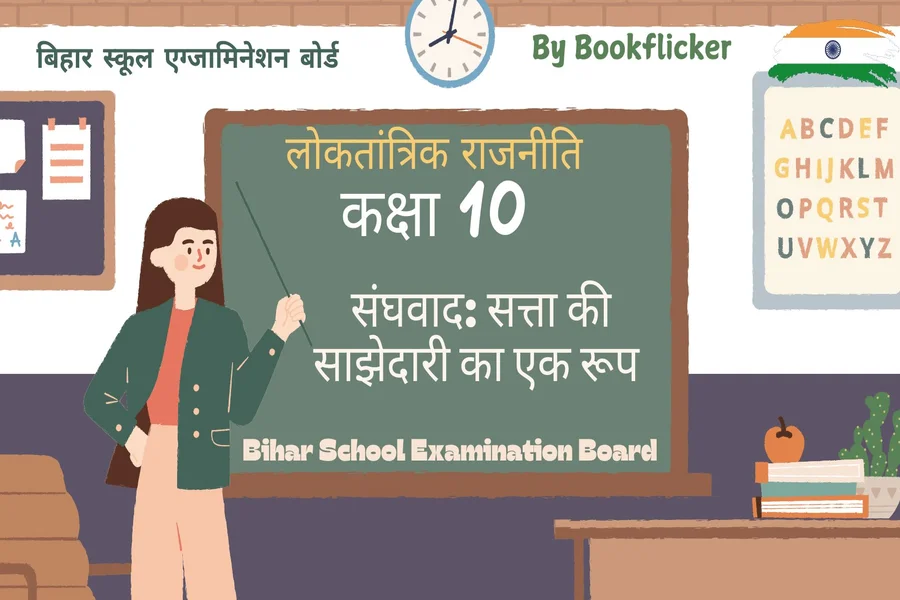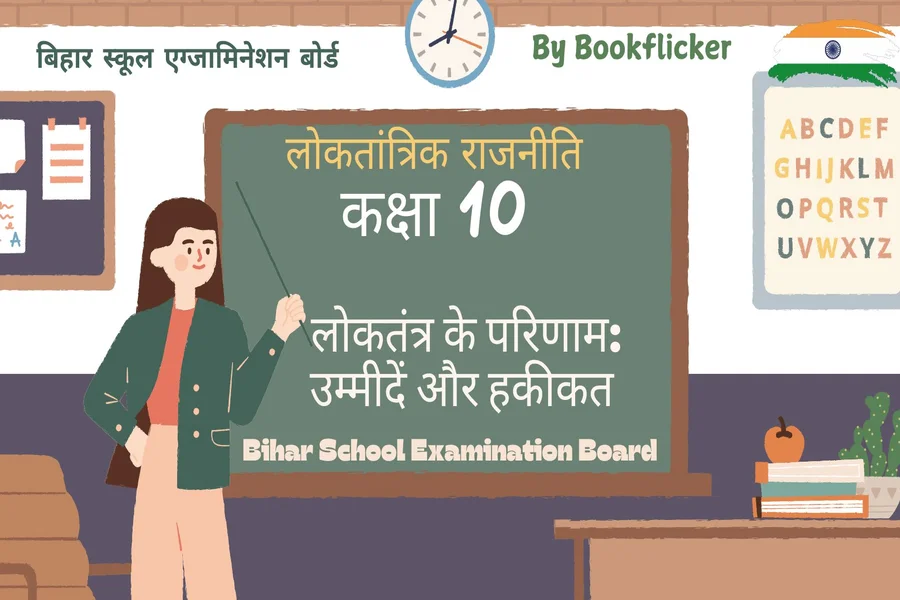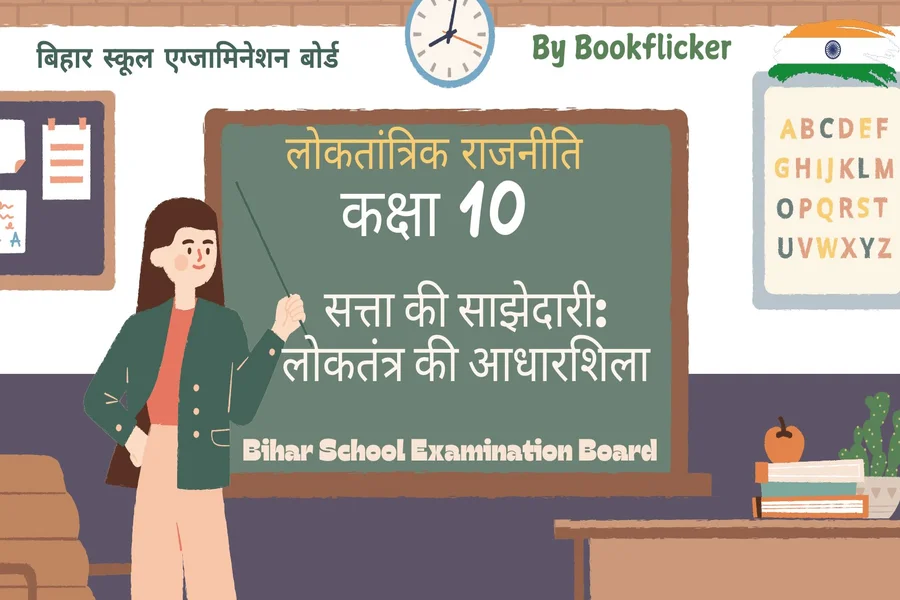Question 1.
Name the author of the following prose piece,’ ‘Indian Civilization and Culture”.
(a) Manohar Malgaonker (b) Mahatma Gandhi
(c) Martin Luther King Jr.
Answer:
(b) Mahatma Gandhi
Question 2.
Mahatma Gandhi in his essay deals in
(a) customs and traditions (b) Poverty and unemployment
(c) civilization and Culture
Ans. (c)
Question 3.
Write ‘True’ or ‘False’
(i) The tendency of Indian civilization is to elevate the moral being.
Ans. True
(ii) Our distinguishing characteristic of modem civilization is not an indefinite multiple of human wants.
Ans. False
(iii) Our civilization, our culture, our swaraj depend upon multiplying our wants.
Ans. False
(iv) The tendency of Indian civilizations is to elevate the moral being.
Ans. False
(v) Dr. Radhakrishan did not brought to the presidency mental equipment and a degree of erudition.
Ans. False
(vi) Nanukaka stood in the doorway of a second class carriage.
Ans. True
(vii) America has given the Negro people a bad chaque.
Ans. True
(viii)We must allow our creative protest to degenerate into physical violence.
Ans. False
Question 4.
Who is the writer of “Indian Civilization and Culture”?
Answer:
Mahatma Gandhi
Question 5.
What does Mahatma Gandhi discuss in his essay?
Answer:
Civilization and culture.
Question 6.
Why the large cities were a share and a useless encumbrance and people not happy?
Answer:
Because of Gangs of thieve, robbers and prostitues.
Question 7. Complete the following sentences on the basis of your reading
(a) Aman is not necessarily became he is rich of unhappy because
(b) Large cities were a share and a useless encumbrance and that people would
(c) In no part of the world and under no civilization
(d) A certain degree of physical harmony and comfort is necessary but
(e) Our civilization, our culture, our swaraj
(f) A man must arrange his physical and cultural circumstances so
(g) ‘Indian civilization and culture’ has been written by
Answer:
(a) happy, he is poor
(b) not be happy in them
(c) have all men attained perfection
(d) above a certain level it becomes a hindrance instead of help
(e) depend not upon multiplying our wants
(f) that they do not hinder him
(g) Mahatma Gandhi.
Bihar Board Class 12 English Textual Questions and Answer
A. Answer the following questions orally
Question 1.
What do you know about Gandhiji?
Answer:
I know Gandhiji as Bapu and as Mahatma. He is called Bapu because he was the father of the nation. He is called Mahatma because he was a great soul or saint. Gandhiji was the leader of the Indian nationalist movement against the British rule. He adopted Satyagraha and nonviolence to achieve all his objectives. In the beginning Gandhiji worked in South Africa where he went to jail several times for protesting against the ill-treatment to Indians there. Gandhiji’s struggle was long, hard but peaceful. In 1942 Gandhiji-led Congress began the Quit India Movement which ultimately paved the way to India’s independence. The world has recognised the worth of his methods of Satyagraha and non-violence. He has been declared as the Man of Millennium.
Question 2.
What did Gandhi do for the farmers in Bihar?
Answer:
It was indigo-peasant’s problems that brought Gandhiji to Champaran in 1917. The British landlords owned large estates in Champaran. Indigo farming was profitable for them but irksome for their Indian peasants. The British landlords were exploiting the poor fanners who lived in constant fear of them. Gandhiji visited Champaran, studied their problems, and fought for their cause. He started a sort of non-violent movement. The farmers of Champaran rallied round him. Gandhi freed them from both exploitation and fear of the British rulers.
Question 3.
What do you understand by civilization and culture?
Answer:
Civilization is the state of development of a people. Their social, political, legal organisation are parts of their civilization. Culture is all the customs, beliefs and ways of living inherited by them. Civilization and culture, in fact, go hand in hand.
Question 4.
What do you holy scriptures tell us about universal human values?
Answer:
Our holy scriptures tell us about truth and sacrifice. They tell us that true happiness lies in spiritual persuits rather than in materialistic ones.
B. 1.1. Complete the following sentences on the basis of what you have studied
(a) India’s glory is that it
(b) The charge aganist India is that
(c) We dare not change what
(d) Our ancestors set a limit to our indulagences because
(e) Our forefathers did not invent machinery because
Answer:
(a) is immovable, (b) her people are uncivilized, ignorant and stolid, (c) we have tested and found hue on the anvil of experience, (d) more we indulge in our passions, the more lunbridled they become, (e) if we invented machinery, we would become slaves and lose our moral fibre.
B. 1.2. Answer the following questions briefly
Question 1.
How is Indian civilization different from European civilization?
Answer:
European civilization is guided by the writings of Greece and Rome, which no longer exist in their former glory. But Indian civilization is steady. It follows the path that our forefathers tested on the anvil of experience and found true and durable. Indian civilization needs no external guide.
Question 2.
Why does Gandhiji say that ‘mind is a restless bird’? What makes the mind restless?
Answer:
Gandhiji says that mind is a restless bird because it is never satisfied. The more it gets the more it wants.
Question 3.
Why did out ancestors dissuade us from luxuries and pleasures? Did they do the right thing?
Answer:
Our ancestors dissuaded us from luxuries and pleasures because they do not lead to happiness. The more one indulges in them, the more dissatisfied one becomes. Our ancestors did the right thing because we find that even the rich people are unhappy, and many poor are happy. In fact happiness is a mental condition. It does not depend on wealth and possessions.
Question 4.
Why according to Gandhi, have we stuck with the same kind of plough as existed thousands of years ago? Should we do the same thing even today?
Answer:
According to Gandhiji we stuck to the plough that existed thousands of years ago because we did not want tp indulge in competition. We were content with our simple ways of life. Health and happiness come through the use of our hands and feet. But I don’t think it will be right to do the same thing today. We cannot feed our one billion population if we used the same old plough today. Besides, our very existence in the modem world would be almost impossible.
Question 5.
How did our ancestors view large cities? Why were they satisfied
Answer:
Our ancestors could foresee the vices that are bound to flourish in big cities. They knew that gangs of thieves and robbers, prostitution and other vices flourish in big cities, and the rich rob the poor. They were, therefore, satisfied with small villages.
Question 6.
How did our ancestors enjoy true’Home Rule’?
Answer:
Our ancestors followed their simple occupations and lived independently. Thus they enjoyed true Home Rule.
B. 2. Answer the following questions briefly
Question 1.
What, according to file author, is modem civilization?
Answer:
According to Gandhiji modem civilization is the worship of materialism and violence and brutality.
Question 2.
What did the author convey to file countrymen about dealing with modem civilization?
Answer:
Gandhiji points out that the tendency of Indian civilization is to elevate the moral being, but that of the western civilization is to propagate immortality. He asked his countrymen to cling to their civilization, but shun the modem civilization at all costs.
Question 3.
What Is the disinguishing characteristic of modem civilization?
Answer:
According to Gandhiji indefinite multiplicity of human wants is the distinguishing characteristic of modem civilization.
Question 4.
The author perceived danger from modem civilization. How?
Answer:
Gandhiji believed that the inventions of modem civilization were too maddening to resist They could give. If they are not resisted, we would barter our permanent good for momentary leasure.
Question 5.
What does author prefer to materialism?
Answer:
The author prefers spiritualism to materialism.
Question 6.
What does our civilization depend on ?
Answer:
Our civilization depends not on multiplying our demands; but on restricting them.
Question 7.
What is civilization in the real sense of the term?
Answer:
In the real sense of the term, civilization means deliberate, voluntary restriction of wants.
C. l. Bihar Board Class 12 English Book Long Answer Questions
Question 1.
‘I BELIEVE that the civilization India has evolved is not to be beaten in the world.’ What does Gandhi mean by this statement? Do you subscribe to his views?
Answer:
Gandhiji is of the firm view that the civilization India has evolved is founded on firm grounds. Our ancestors tested it on the anvil of their experience and found it to be true. The civilization of India has withstood the test of time. Egypt we a great and powerful civilization. It has lost its glory. It no longer exists. Same is the case with the great Roman and Greek civilization. They have lost their former glory. Japan has westernised. The people of Europe are inspired by Greek and Roman writers, and believe that they will be able to steer clear of the mistakes those people made. But Gandhiji does not hope that they will be able to do so.
About the Indian civilization, Gandhiji says that people of the world think that the people of India are not willing to adept themselves to new ideas. But Gandhiji does not consider it a fault. It is our merit because our civilization is perfect and lasting. We need nobody’s guidance. I subscribe to Gandhiji’s viewpoint. The civilization of India is thousands of years old, and is still going strong. The philosophy of our ancestors propounded is ingrained in our blood. But, I think, Indian civilization is flexible. It can easily assimilate ideas from other civilizations, and still can march ahead with great vigour. That is the beauty and merit of Indian civilization.
Question 2.
‘We notice that the mind is a restless bird, the more it gets the more it wants, and still remains lesson, unsatisfied.’ Pick out other metaphors used in the How do these metaphors help Gandhiji in persuading the readers?
Answer:
Besides, the metaphor that ‘the mind is a restless bird’, Gandhiji has used a few more metaphors. They have not only embellished the language, but have added force of persuation also. We can imagine a bird. It feeds and feeds, and still is dissatisfied. Being a bird, it flies is search of more and more food. Such is our mind. It flies like a dissatisfied and hungry bird. It craves for more and more, and is never satisfied. This metaphor makes the subtle idea of human dissatisfaction so easy to understand. Every reader can imagine and can understand it. Then Gandhiji has used another metaphor.
‘We have tested and found it true on the anvil of experience.’ We can imagine a blacksmith hammering a piece on the anvil. If anything is solid and well formed it will not break. So is our civilization. How easy it is to understand it. Gandhiji also says that our old and tested civilization is the sheet anchor of our hope’. This is a beautiful metaphor. A large ship on the sea is steadied by her sheet anchor in the face of a storm. Through this metaphor Gandhiji has forcefully conveyed to us that it is only our civilization that can help us to survive and face all sorts of misfortunes and troubles.
Gandhiji calls big cities snares. This metaphor too is very easy to comprehend. As poor animals are caught with snares, so the innocent and poor people are trapped by vices and cunning people in cities. So we should avoid big cities.
Question 3.
‘A man is not necessarily happy because he is rich, or unhappy because he is poor. The rich are often seen to be unhappy, the poor to be happy.’ What, according to Gandhi, holds key to real happiness? How does Gandhi define ‘happiness’?
Answer:
According to Gandhiji, happiness is a state of mind. Wealth and luxuries do not make a man happy. The wealthy are not always happy and the poor are not always unhappy. Luxuries and comforts often become a burden and cause physical and mental pain. People who work enjoy better health and happiness than those who are slaves to machines and others. By multiplying our desires we become less and less happy. That is why our ancestors put a limit on our indulgence. Self-restraint is the key to happiness.
Question 4.
Why did our ancestors feel satisfied with small villages? Did they do the right thing? Will it be wise today to follow our ancestors in this connection ? Give your own view.
Answer:
Our ancestors believed in simple living and high thinking. They knew that if we run after materialistic things, we will lose our moral fiber. I They deliberately did not invent machines. People lived in small villages, and followed their respective occupations and earned a regular wage. Life in villages was free from competition. The ancestors knew the evils of city life. There are vices like gambling and prostitution. There is exploitation. I rich exploit the poor. There are robbers and thieves. Villages were free from I these vices arid evils. So they were satisfied with small villages. I think they did the right thing.
Today we see that more and more people are coming to cities. There is overcrowding. People get no water to drink, and no proper houses to live in. Slums are coming up very fast. People live in inhuman conditions. All the evils and vices that Gandhiji mentioned are there. The people are coming to cities on account of two things. Firstly, there are fewer opportunities in villages. People do not get employment. Traditional | occupations are no longer helpful. Secondly, it is the glamour of city life that brings people there. They are soon disillusioned but they cannot go back to their villagers. Even today, we need to correct it. We should develop villages so that people can earn a respectable living. Then people will not think of flocking to cities.
Question 5.
Discuss the negative features of western civilization.
Answer:
The western civilization laid more stress on materialistic progress than spiritual enlightenment. They spent their energy on physical discoveries. t They have tried, and at that successfully, to bring physical comforts. Indeed their scientific discoveries and inventions are dazzling. Today the whole
world feels indebated to the west for making their lives comfortable. But all these discoveries have almost totally ignored the soul of man. The result is that demand for physical comforts is endless. This is increasing burden on our “planet. Search for material gain has fuelled man’s greed. The people in the developed countries have become more and more deperident on machines. The earth is unable to meet their insatiable demands«.Now the scientists in the west paint a bleak future of mankind. Pollution, global warming, depletion of ozone layer, and thousands of other such problems threaten our planet. The multiplying demands of the western civilization are responsible for this chaos.
Question 6.
What is the essential difference between the Indian eivilization and the western civilization? How is our civilization supperior to the western civilization?
Answer:
The essential difference between the Indian civilization and western civilization is of a kind and not of degree. The essential difference is the same as between body and soil., between material and the spirit. The western civilization is in search of endless pleasure, the Indian civilization sets a limit to indulgence. The western civilization has made discoveries to find physical comforts; the Indian civilization has sought to discover the true nature of the soul and the eternal bliss. Indian philosophers discovered that soul is more important than body, so their discoveries have found ways to
elevate the mind and the spirit. But western civilization ignored this aspect altogether. They found comforts and luxuries. Naturally, our civilization is superior because there is no limit to physical comforts. Rather, after a certain stage, they are more burdensome than enjoyable. The more comforts and luxuries we have, the more we crave for. We found no happiness. But by a voluntary restrain on indulgence in passions, we can find true happiness.
Question 7.
‘A certain degree of physical harmony and comfort is necessary but above a certain level it becomes a hindrance instead of help.’ Elaborate.
Answer:
Humans have both body and soul. No doubt soul is more important. It dwells in the body. But without the body, the soul cannot achieve anything. If we want to elevate our spirit, we need to work hard for it. If we want to serve humanity, we cannot do so unless our body is strong and has some degree of comfort. If we are uncomfortable, we cannot make the best use of our physical energy. So a degree of physical comfort is essential. But to be slave to comforts and pleasures will degrade us morally. Indeed there should be a degree of physical harmony and comfort. But indulgence in passions without restraint will become a burden and hindrance. Man will not be able to do good to himself or to society.
Discuss the following in groups or pairs;
Question 1.
‘Truth and non-violence have been the biggest weapons of mankind.
Answer:
There have been great wars in which most deadly weapons were used. Millions of people were killed and cities were destroyed. But those wars could not achieve anything. They could kill and captivate people, but could not win a single soul. But there have been some people like the Buddha and Christ. They used not a single weapon. They killed nobody. They destroyed no homes. But they have conquered empires and mle over the hearts of millions of people. Their weapon was the weapon of truth and love. Their empires are still intact. Gandhiji was a frail man. He was armed with a lathi which he never used even to threaten anybody. He led armies of unarmed men and stood against the bullets and lathis of the British police. Still he won. His weapon was the biggest weapon-truth and non-violence.
Question 2.
High thinking cannot go alongside high living.
Answer:
Exceptions may be found here and there, but it is generally true that high thinking cannot go alongside high living. Those who are given to high thinking find that living life of luxury is meaningless. Naturally they prefer to lead a simple life. Ourrishis and saints who have discovered ultimate truth led simple lives. But those who live in luxury have little time to think deeply. All the best literature, thought and philosophy in the world has come from people who led simple lives. No wealthy man has ever made great contribution to human throught. We have examples of people who renounced worldly possessions and led saintly lives. The Buddha gave up his kingdom and Tolstoy gave away his lands, and enriched the world with their wisdom.
C. 3. Composition
Write a paragraph in about 100 words on each of the following :
(a) The real dignity of man lies not in what he has but in what he is. Ans. Many people believe that they would gain greater respect in society
if they had more wealth. But they find it is a fallacy, because wealth comes in a thousand ways, and most of the ways are not respectable. Wealth can come through inheritance, through winning a jackpot, through smuggling, cheating, robbing and many other immoral and illegal ways. All these ways hardly make a man great. But people of character and wisdom are truly respected. India has a long tradition of respecting saints and sanyasins. Even the richest men bow to them. It is only character and integrity that make a man great.
(b) The crown and glory of life is character.
Ans. Character is what gives man inner glow. Wealth and possession do not make a man great. In the hour of crisis, it is not wealth that can give man courage, but its character that helps a man to face misfortunes with fortitude. Wealth and possession make a man appear to shine as the rays of the sun falling on window panes. But when the sun sets, there can be a glow only if there is light within. Similarly a man may appear to be great when he has wealth. His true worth is seen when he loses wealth. Indeed character does not make only a man great, but a nation becomes great if there are men and women of strong character.
D. WORD STUDY
D.1. Dictionary use
Ex. 1. Correct the spellings of the following words
Answer:
disuaded — dissuaded
ocupation — occupation
votries — votaries
imorality — immorality
unadulterated — unadultrated
matarialism — materialism
beleif — belief
madning — maddening ‘
engrev — engrave
harmoney — harmony
Ex. 2. Lookup a dictionary and write two meanings of the following
words— the one in which it is used in the lesson and the other which is more common.
Answer:
reason:
(i) faculty of rational argument
(ii) a cause or motive
thinking:
(i) opinion or judgment
(ii) the process of thought
wants:
(i) deficiency
(ii) desire; need
ruin:
(i) downfall; destruction
(ii) a destroyed or fallen building
copy:
(i) an imitation
(ii) a single specimen of something
D. 2. Word-formation
Read carefully the following sentence taken from the lesson.
Each followed his own occupation.
In the above sentence the word ‘occupation’, which is an abstract noun, is derived from the verb ‘occupy’. Now derive abstract nouns from the verbs given below and use them (abstract nouns) in sentences of your own.
convert – conversion
perform – performance
defin – definition
please – pleasure
educate – education
observe – observation
Sentance –
conversion: Please tell me the formula of conversion of Fahrenheit temperature into Centigrade temperature.
performance: Sunita’s performance on the stage was greatly appreciated,
definition: What was Gandhiji’s definition of Satyagraha?
pleasure: It was a pleasure to hear classical music,
education: Education should be accessible to all.
observation: Newton had a keen power of observation.
Ex. 2. Fill in the blanks with suitable words (gerunds) from the given list living thinking writing bartering maddening
(i) Pragya’s is not very legible.
(ii) The police could not control the crowd.
(iii) We are in danger of away the permanent good for a momentary pleasure.
(iv) Gandhi always believed in simple
(v) Amandeep’s was quite logical.
Answer:
(i) writing, (ii) maddening, (iii) bartering, (iv) living, (v) thinking.
D. 4. Phrases
Ex. 1. Read the lesson carefully and find out the sentences in which the following phrases have been used. Then use these phrases in sentences of your own:
satisfy with, be sujited to, believe in, cling to, in vain
Answer:
satisfy with: We are unhappy because we are not satisfied with what we have.
be suited to: The climate of Bihar is not suited to growing apples.
believe in: I believe in God.
Cling to Let’s not cling to outdated customs
in vain: He tried hi vain to persuade him to give up smoking.
Bihar Board Class 12 English Book Solutions Chapter 1 Indian Civilization and Culture
E. Grammar
Ex. 1. Complete the sentences given below by using the appropriate forms of the verbs given in brackets :
(a) Indian civilization has……..it alive till now. (keep)
(b) I see here ancient India still……….. (live)
(c) We have………… many things from western literature, (borrow)
(d) We have been………… west since long, (copy)
(e) Arya did…………. so, (speak)
(f) Nehru had…………. so many letters to his daughter from jail, (write)
Answer:
(a) kept, (b) living, (c) borrowed, (d) copying, (e) speak, (f) written.
Ex. 2 Study the following sentence from the lesson
We notice that the mind is a restless bird, the more it gets the more it wants. Mark the use of double comparative in the above sentence. Form ten sentences of your own choice on this pattern.
Answer:
1. The higher we go, the cooler it is.
2. The harder he worked, the better he grew.
3. The more you spend, the less you have.
4. The louder she cried, the hoarser she became.
5. The more she earns, the more she spends.
6. The longer we waited, the darker it became.
7. The higher the sun rises, the hotter it becdome.
8. The more he ate, the fatter he became.
9. The farther he walked, more desperate he became.
10. The harder you work, the better you achieve.
11. The more he earned, the less he spent.


